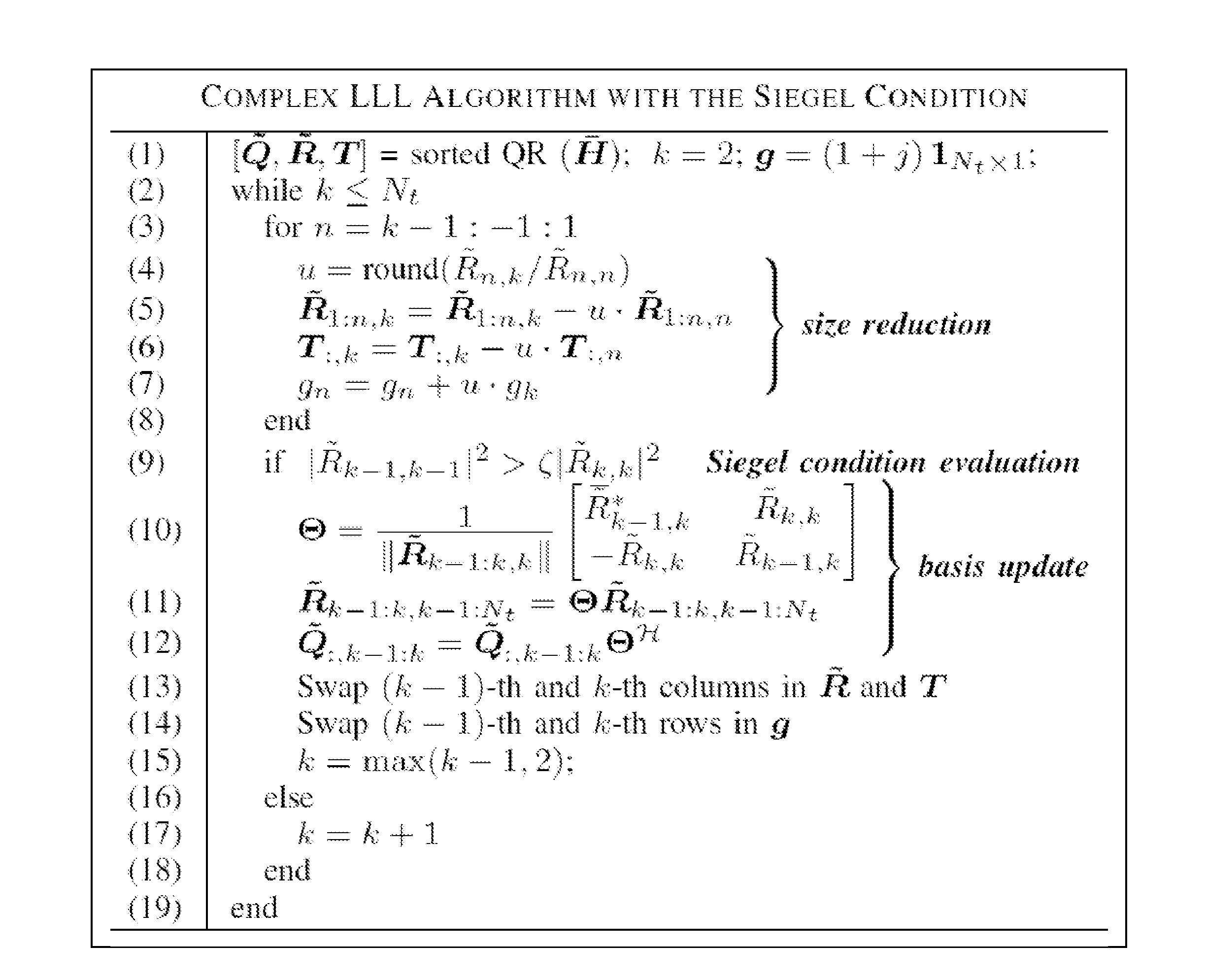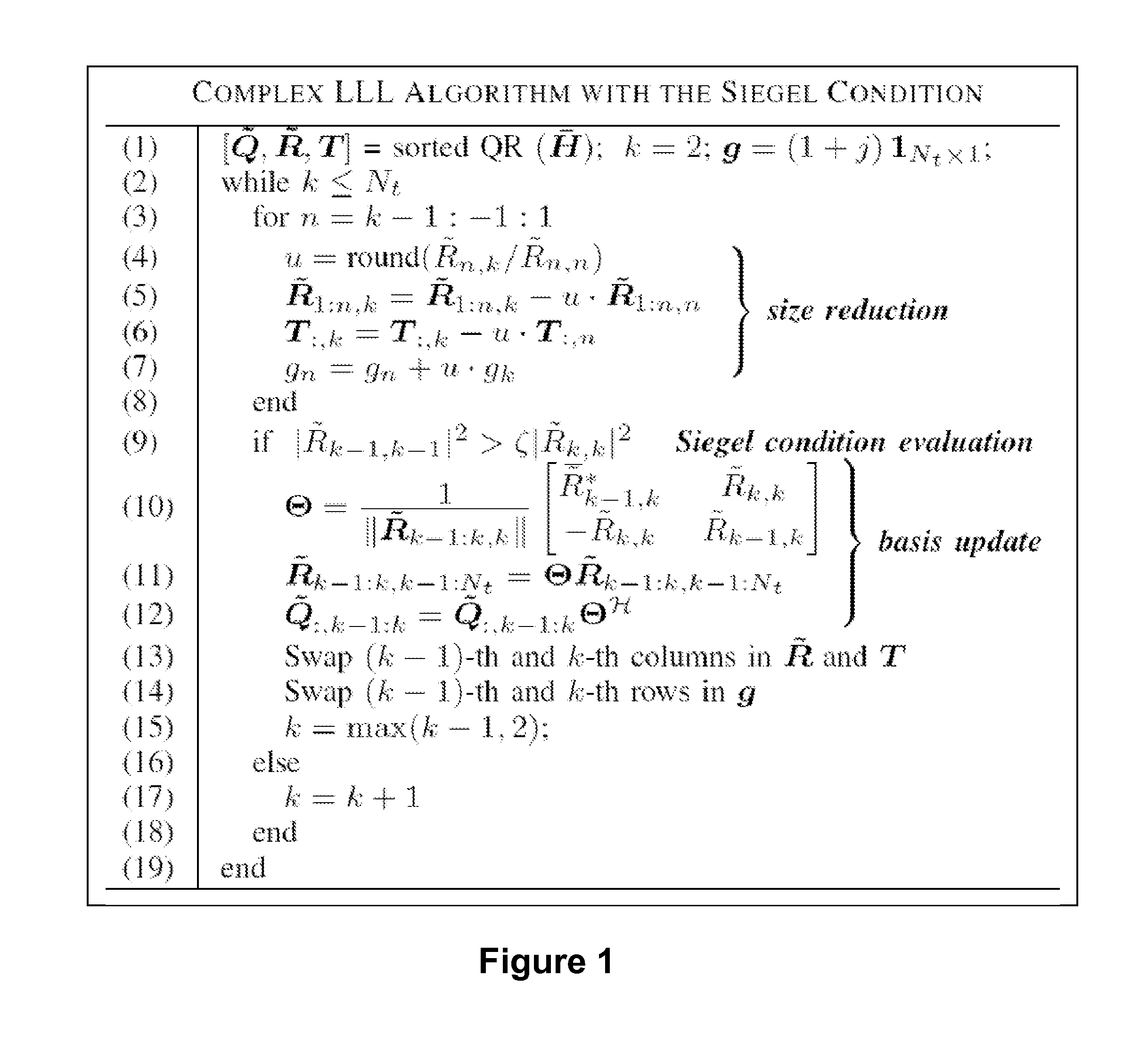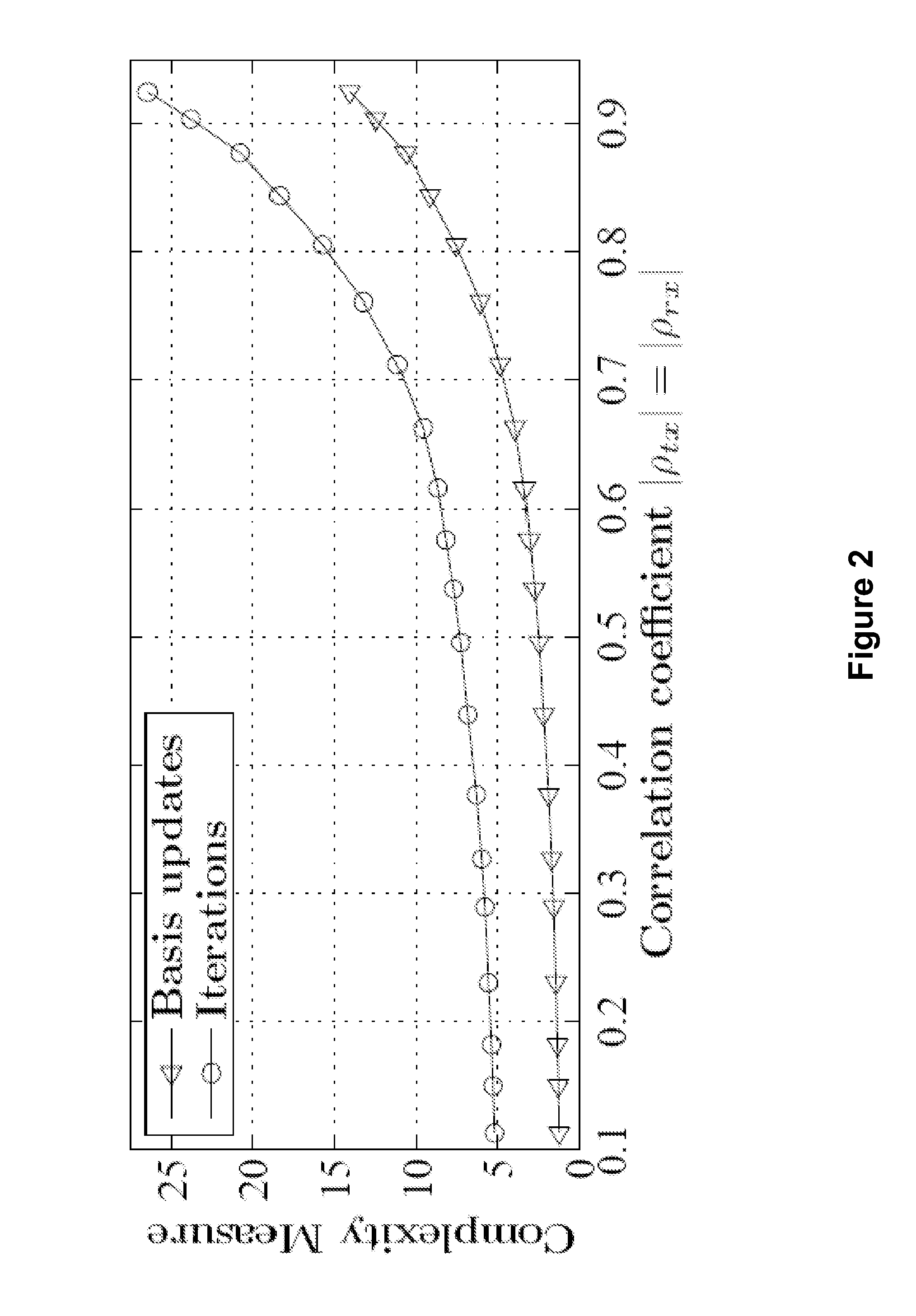Incremental lattice reduction systems and methods
a technology of lattice reduction and lattice, applied in the field of signal processing systems and methods, can solve the problems of inability to implement hardware implementations, different obstacles to the transmission of signals, and methods that do not collect the same diversity
- Summary
- Abstract
- Description
- Claims
- Application Information
AI Technical Summary
Benefits of technology
Problems solved by technology
Method used
Image
Examples
Embodiment Construction
[0033]To facilitate an understanding of the principles and features of the invention, various illustrative embodiments are explained below. In particular, the invention is described in the context of being systems and methods for lattice reduction for MIMO communication systems. Embodiments of the present invention may be applied to many wireless MIMO communication system standards known in the art, including, but not limited to, IEEE 802.11 (Wi-Fi), 4G, 3GPP, Long Term Evolution, Wi-MAX, HSPA+, and the like. Embodiments of the invention, however, are not limited to use in wireless MIMO communication systems. Rather, embodiments of the invention can be used for processing other MIMO communication systems, including, but not limited to, optical MIMO systems or other transmission systems having an architecture incorporating multiple transmitters and / or multiple transceivers.
[0034]The components described hereinafter as making up various elements of the invention are intended to be ill...
PUM
 Login to View More
Login to View More Abstract
Description
Claims
Application Information
 Login to View More
Login to View More - R&D
- Intellectual Property
- Life Sciences
- Materials
- Tech Scout
- Unparalleled Data Quality
- Higher Quality Content
- 60% Fewer Hallucinations
Browse by: Latest US Patents, China's latest patents, Technical Efficacy Thesaurus, Application Domain, Technology Topic, Popular Technical Reports.
© 2025 PatSnap. All rights reserved.Legal|Privacy policy|Modern Slavery Act Transparency Statement|Sitemap|About US| Contact US: help@patsnap.com



